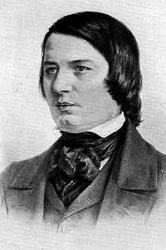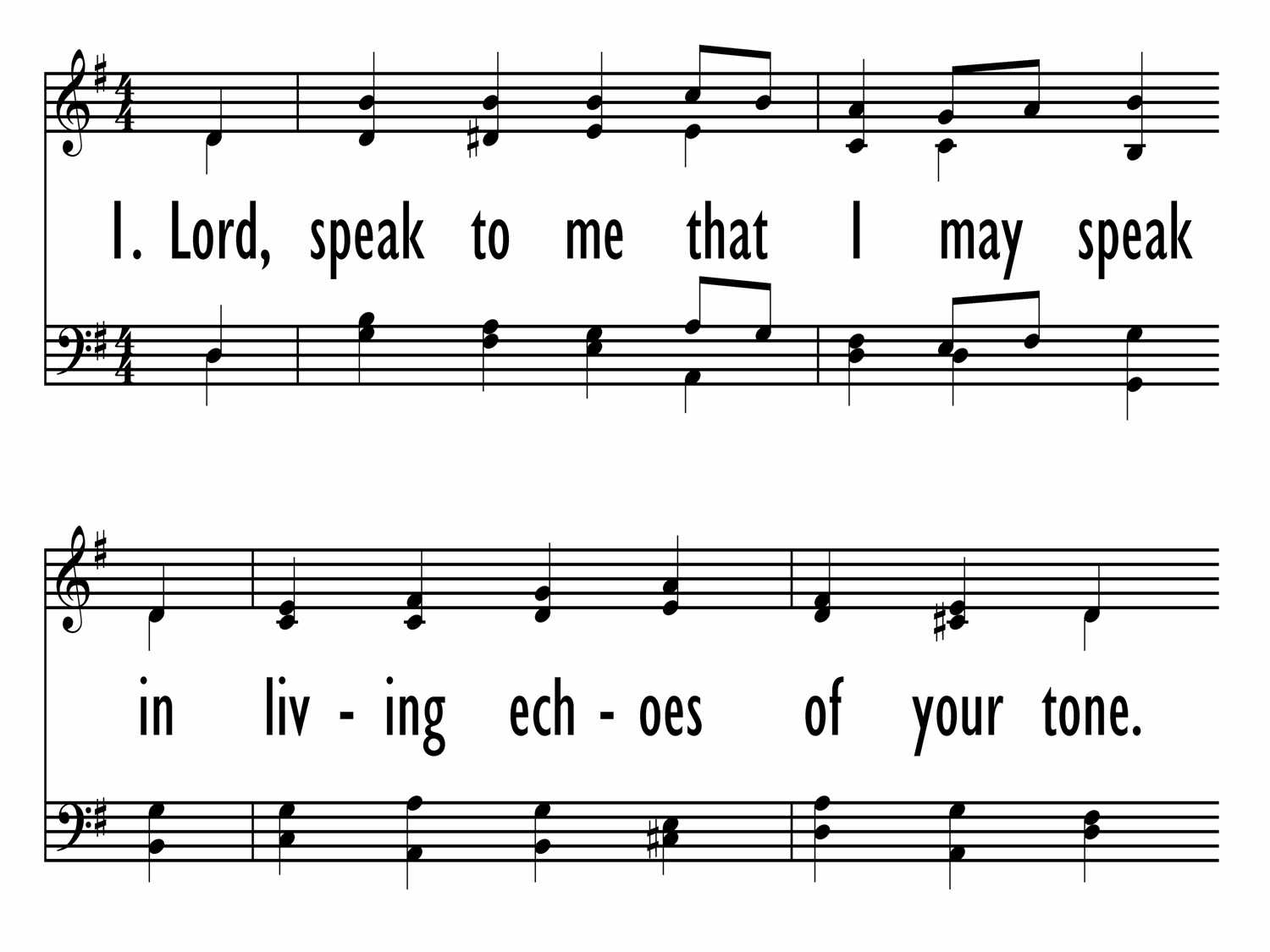Derived from the fourth piano piece in Robert A. Schumann's Nachtstücke, Opus 23 (1839), CANONBURY first appeared as a hymn tune in J. Ireland Tucker's Hymnal with Tunes, Old and New (1872). The tune, whose title refers to a street and square in Islington, London, England, is often matched to Havergal's text.
CANONBURY has a simple binary form, which consists of two versions of the same long melody. Sing in parts, ideally with a sense of two long lines rather than four choppy phrases, possibly with a fermata at the end of the first long line.
Robert Schumann (b. Zwickau, Saxony, Germany, 1810; d. Endenich, near Bonn, Germany, 1856) wrote no hymn tunes himself, though a few of his lyrical melodies were adapted into hymn tunes by hymnal editors. One of the greatest musicians of the Romantic period, Schumann did not at first seem destined for a musical career. Although he was a precocious piano player, his mother and his guardian insisted that he study for a legal career. From 1828 to 1830 he studied law at Leipzig and Heidelberg Universities, but much of his time was consumed with music and poetry. From 1830 until his death Schumann devoted his life to music. After a finger injury terminated his concert career as a pianist in 1832, he turned completely to composition. Schumann composed successfully in many genres but became especially famous for his piano works and song cycles. In 1840 he married Clara Wieck, whom he had known since 1828; she was a famous pianist and composer in her own right who inspired many of Schumann's songs. He suffered from depression for much of his adult life and in 1854 after an unsuccessful suicide attempt, was admitted to a mental institution, where he later died. Schumann founded the magazine Neue Zeitschrift für Musik and edited it for ten years.
Derived from the fourth piano piece in Robert A. Schumann's Nachtstücke, Opus 23 (1839), CANONBURY first appeared as a hymn tune in J. Ireland Tucker's Hymnal with Tunes, Old and New (1872). The tune, whose title refers to a street and square in Islington, London, England, is often matched to Havergal's text.
CANONBURY has a simple binary form, which consists of two versions of the same long melody. Sing in parts, ideally with a sense of two long lines rather than four choppy phrases, possibly with a fermata at the end of the first long line.
Robert Schumann (b. Zwickau, Saxony, Germany, 1810; d. Endenich, near Bonn, Germany, 1856) wrote no hymn tunes himself, though a few of his lyrical melodies were adapted into hymn tunes by hymnal editors. One of the greatest musicians of the Romantic period, Schumann did not at first seem destined for a musical career. Although he was a precocious piano player, his mother and his guardian insisted that he study for a legal career. From 1828 to 1830 he studied law at Leipzig and Heidelberg Universities, but much of his time was consumed with music and poetry. From 1830 until his death Schumann devoted his life to music. After a finger injury terminated his concert career as a pianist in 1832, he turned completely to composition. Schumann composed successfully in many genres but became especially famous for his piano works and song cycles. In 1840 he married Clara Wieck, whom he had known since 1828; she was a famous pianist and composer in her own right who inspired many of Schumann's songs. He suffered from depression for much of his adult life and in 1854 after an unsuccessful suicide attempt, was admitted to a mental institution, where he later died. Schumann founded the magazine Neue Zeitschrift für Musik and edited it for ten years.
--Psalter Hymnal Handbook, 1988


 My Starred Hymns
My Starred Hymns







